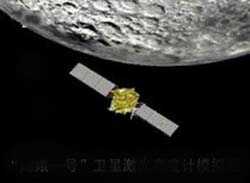
After two years' research, the CAS Shanghai Institute of Technical Physics (SITP) has succeeded in developing the prototype of a laser altimeter for Chang'e 1, China's first lunar orbiter, due for its virgin launch in 2007.
The device will measure the distance between the satellite and the lunar surface through remote sensing technology, said Wang Jianyu, SITP director during an interview with mass media. It can function over a range of about 200 kilometers, feathuring a five-meter error and one-meter resolution.
According to Prof. Wang, the data collected, as soon as processed by land based systems, will provide information for analyzing the moon's surface features and detecting the thickness of lunar soil.
Assuming everything goes to the plan, it will be the first success that China has sent a laser instrument into space.
Prof. Wang also said that while developing the laser altimeter, his institute also produced four key optical remote sensing instruments for a new generation of China-made weather satellites, the Fengyun 3, and a prototype of infrared cameras of the Environment 1B satellite.
The Fengyun 3 instruments have been developed to international standards with independent property rights. The infrared camera uses four wavebands that can be used to accurately and rapidly detect and forecast storms, forest fires, typhoons and earthquakes as well as ecological damages and environmental accidents.





